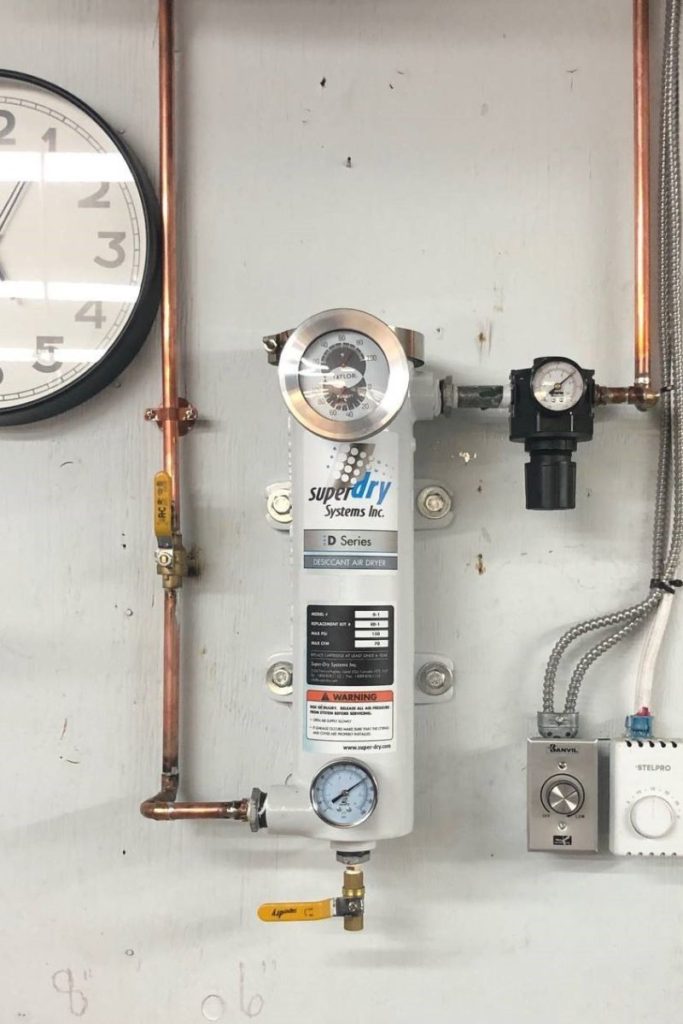Desiccant Air Dryer: What You Should Know
Multiple individuals have discovered tiny chemical packets within the packaging of photographic or electronic equipment. These packets are placed there to collect water vapor and keep the container’s inner atmosphere dry.
This method prevents moisture damage to sensitive machinery or equipment. Activated alumina and silica gel are common desiccants, sometimes called compressed air drying agents. Desiccant air dryers are essential for eliminating moisture from compressed air.
It is normal for compressed air to contain water vapor, and in the case of air-cooled compressors, the air might be even warmer than the surrounding atmosphere.
How Long Does Air Dryer Desiccant Last?
A desiccant’s lifespan can vary depending on the working conditions of the dehumidifying machine. For single-tower systems, we advise desiccant replacement every year. For twin-tower systems, the recommended replacement time is three years. The environment in which a desiccant is used can affect how rapidly it degrades. When to refill your desiccant depends largely on dew point temperatures.
How to Maintain Your Desiccant Air Dryer?
Regular maintenance of desiccant air dryers is important to ensure it operates efficiently for a long period. Maintaining desiccant air dryers also reduces spending on repairs. Here are some tips on how to maintain your desiccant air dryer:
1. Regular Filter Maintenance and Replacement
One of the first and most important maintenance tips is regularly replacing your air filters. These filters protect the dryers from certain damaging materials in the atmosphere.
However, if you don’t install, maintain and properly handle your filters, they will likely get damaged easily. Therefore, regular replacement of filters is essential to ensure the smooth functioning of your dryer. As a general rule, you should replace the filters between 6 months to one year.
If your filter is defective, don’t delay replacement, as it could create problems for the dryer.
2. Drain Its Liquids
Draining away any liquids while maintaining your air dryer is necessary. To prevent an excessive buildup of these liquids in the pre-filter, they must be frequently emptied and cleaned off.
3. Check the Valves Regularly
The functioning of your air dryer’s valves is another thing to pay attention to. There are many valves to monitor. If you don’t perform a regular valve check, the dryers may not perform optimally.
You will require professional assistance for this task since it involves accessing every valve in your air dryer system at great length. Only a skilled expert will have the knowledge and skills required to do this type of maintenance for you.
4. Regular Maintenance of Desiccant Material
Another thing you need to take care of during the desiccant air dryer’s maintenance is the desiccant material itself. Compressed air dryers employ several different forms of desiccant, often more than one type in one dryer.
Molecular sieve, Activated alumina, and silica gel are the most popular desiccant materials used in compressed air dryers. All three mentioned varieties have a shelf life and will eventually need to be replaced.
Desiccant deteriorates because of frequent drying or absorption, bead-to-bead abrasion from air passing through the bed, and desorption (regeneration) cycles.
Moreover, contamination, commonly in liquid water or air compressor oil, can also harm it. In the event of significant contamination like the failure of an air compressor separator element or an upstream drain, you should look out for the following signs of damage:
- Moisture downstream
- Lubricant in exhaust mufflers
- Lubricant in post filters
In these situations, it is essential to replace the desiccant completely. Furthermore, it is more challenging to determine the progressive degradation of desiccant caused by typical “wear and tear.” The desiccant is often replaced based on its elapsed time or performance. However, the degradation can occur fairly quickly, damaging the entire system or the dryer before you’ve serviced it.
In heatless dryers, desiccant degradation takes 3 to 5 years, while it takes 2 to 3 years in heated blower purge and heated dryers.
You can use sample testing to determine change intervals in the case of larger dryers where desiccant change is time-consuming and costly. Testing desiccant samples may involve determining the heat of adsorption, surface area, or moisture adsorption by weight to gauge the bead abrasion level. To prevent unnecessary maintenance costs, you can use this information to predict the desiccant material’s life span.
5. Monitoring the Dew Point
Some desiccant air dryers contain sensors for measuring and monitoring the temperatures, humidity level, pressure, and pressure dew point. Since all users prefer greater data accessibility via the dryer controllers, there is a rise in demand for dryers with sensors.
The sensors give user-reference information and data to regulate the dryer’s operation. Generally, dew point sensors require calibration after 8,000 operational hours, whereas others don’t.
Final Word
Remember to follow the tips mentioned in this blog to maintain your desiccant air dryer. Doing so will increase its life span and efficiency while allowing you to save money on repair costs.
Are you seeking an affordable, high-quality, and durable desiccant air dryer? Super Dry Systems is here to help. We have over 25 years of experience providing super-dry desiccant air dryer systems and solutions for point-of-use applications; we will handle all your requirements. We also provide low dew points with zero air loss for intermittent flow applications.
Click here to get in touch with us today. You can also email info@super-dry.com or call 1-888-828-1122 to learn more about our offerings.


